The Dangers of Sun Exposure

Sunbathing and sun exposure can put you at risk for serious medical problems. Damage to the skin, including abnormal discoloration, wrinkling, and skin cancer, can result from overexposure to the sun. The good news is that sun-damaged skin can be treated.
Getting a Suntan
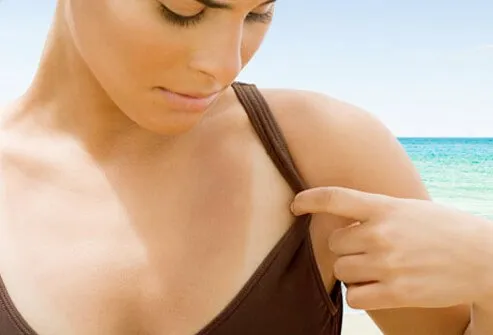
Darkened skin that results from tanning is actually a sign of damage to the skin. Exposure to ultraviolet (UV) rays from the sun increases your risk of developing skin cancer in the future. Always use SPF 30 or higher sunscreen when in the sun.
Sunburn (First-Degree Burns)

The redness on your skin that is a result of excessive sun exposure is called sunburn. It is actually a thermal burn to the outer layer of the skin (first-degree burn). Treatments for sunburn are aimed at reducing pain or discomfort and include over-the-counter anti-inflammatories, cold compresses, and moisturizing creams.
Sunburn (Second-Degree Burns)
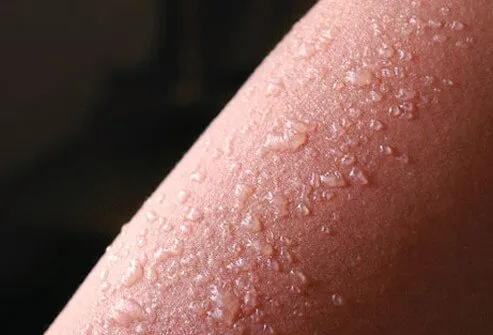
More severe sunburn can lead to blistering of the skin. This is considered a second-degree burn. The damage is deep into the tissues to the nerve endings. It is usually very painful. Do not break any blisters that form, as they protect the damaged skin. Seek medical care if blisters develop on your sunburned skin.
Wrinkles
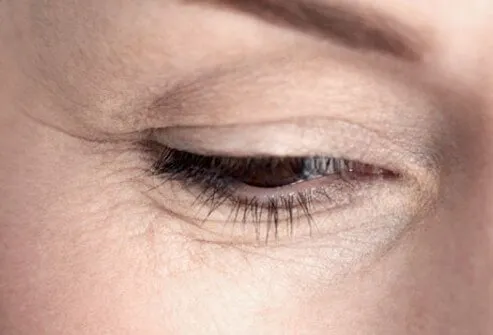
The sun's ultraviolet (UV) light can damage the layers of the skin. Over time, this damage shows up as sagging, stretched, wrinkled skin.
Uneven Skin Tone
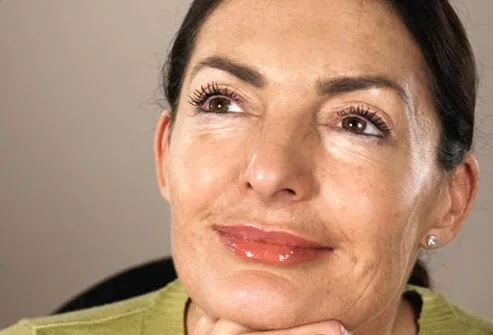
Solar UV light can also cause irregular skin pigmentation. This causes skin tone to appear uneven or discolored.
Freckles

In most people, freckles are normal and do not pose a health risk. They may appear more prominent after exposure to the sun. However, some early stage cancers may resemble freckles. See a doctor if a freckle has an unusual size, shape, or color, or becomes painful.
Melasma (Pregnancy Mask)
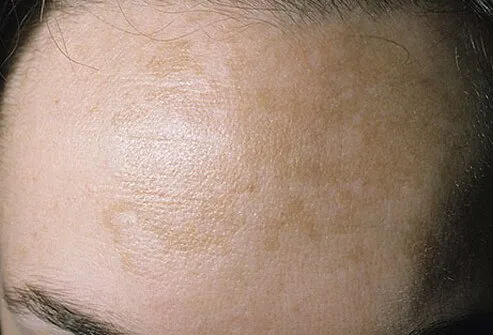
Melasma (chloasma) is an abnormal patch of brown skin on the cheeks, nose, or forehead, usually developing during pregnancy. Always use sunscreen with SPF 30 or higher; if you have melasma, sun exposure may cause the condition to worsen.
Age Spots (Solar Lentigines)

Age spots (solar lentigines) are harmless spots that appear on sun-exposed areas of the skin, most commonly on hands, face, and neck. They occur after repeated or chronic sun exposure. Consult your doctor or dermatologist to monitor any abnormal skin discoloration you may have.
Actinic Keratosis (Solar Keratosis)
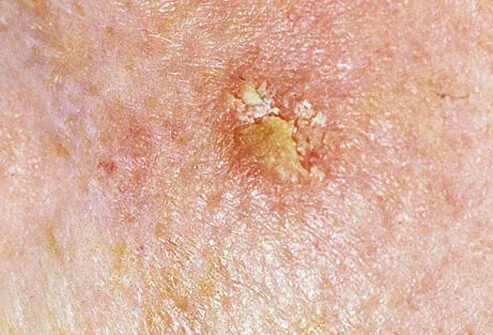
Actinic keratosis is the name for small, scaly red or brown papules that are the result of excessive sun exposure. They are more common in people with fair skin, blonde or red hair, and blue or green eyes. They may progress to a type of skin cancer called squamous cell carcinoma.
Actinic Cheilitis (Farmer's Lip)
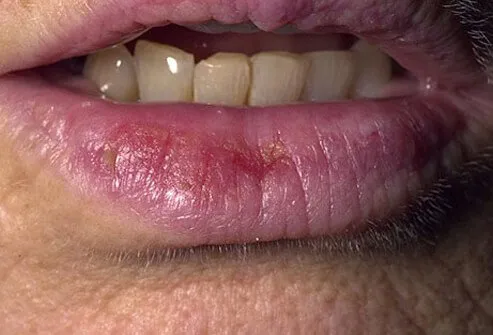
Actinic cheilitis is related to actinic keratosis, but it appears on the lower lips. This is a precancerous condition with symptoms including scaly patches or dry, cracked lips. It can become squamous cell carcinoma, so see your doctor for diagnosis and treatment.
Squamous Cell Carcinoma
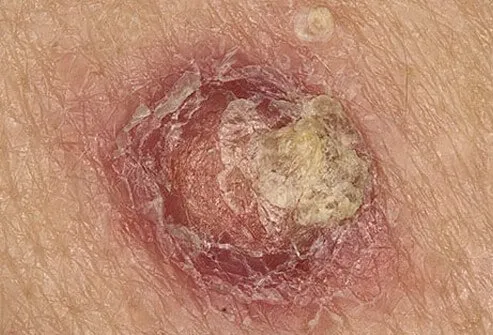
Squamous cell carcinoma is a type of skin cancer that can appear as a firm, red nodule or a crusted, scaly wound that does not heal. It is not usually brown-pigmented like melanoma. It often occurs in sun-exposed areas of the body such as the head, face, lips, ears, and hands. It is curable in its early stages.
Bowen Disease
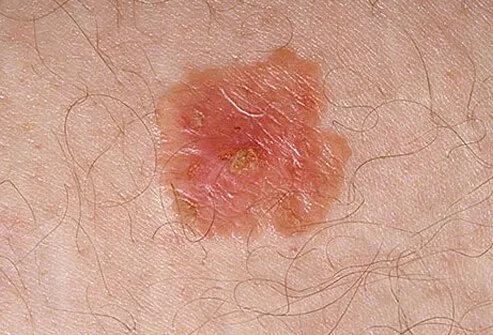
Bowen disease is referred to as squamous cell carcinoma "in situ." It is a noninvasive skin cancer that stays on the skin's surface. It usually appears as reddish-brown, scaly, or crusty plaque.
Basal Cell Carcinoma
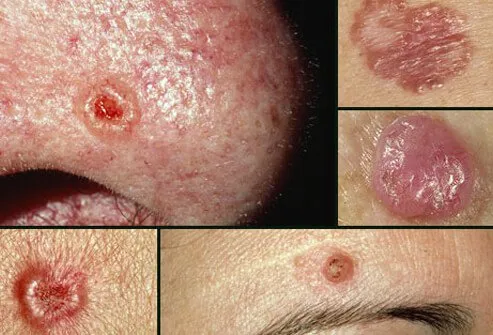
Basal cell carcinoma is the most common form of skin cancer. It is the most easily treated because it grows very slowly. Basal cell carcinoma usually appears as a lump or an irregular ulcerated area on the skin. It can also appear as a flat, scaly, scab or a white, waxy scar-like lesion on some skin-damaged areas.
Melanoma
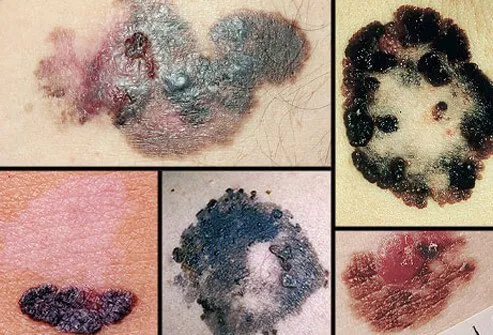
Melanoma causes the vast majority of skin cancer deaths. Melanomas usually appear on the skin as irregularly shaped moles or freckles. Their irregular shape, size, and coloration are indicators that they are cancerous. Consult your doctor or dermatologist if you are concerned about any moles or lesions on your skin.
Cataract
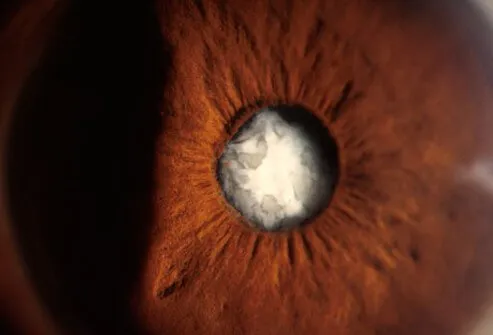
The lens of the eye can develop a cataract due to overexposure from ultraviolet (UV) light from the sun. Cataracts are not painful but can cause cloudy vision, double vision, and glare from lights. Prevention of cataracts includes wearing sunglasses and hats to shield the eyes from the sun.
Prevention -- Stay Out of the Sun
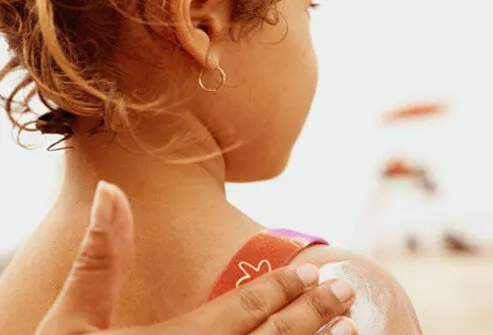
The best way to avoid skin damage from the sun is to avoid sun exposure.
- Stay out of the sun midday, from 10 a.m. to 4 p.m.
- Wear SPF 30 sunscreen when outdoors.
- Wear protective clothing, including hats and sunglasses.
- See a doctor to check any skin changes.
Sun-Damaged Skin: See Sun Spots, Wrinkles, Sunburns, Skin Cancer
This tool does not provide medical advice. See additional information: 
© 1996-2025 WebMD, LLC. All rights reserved.